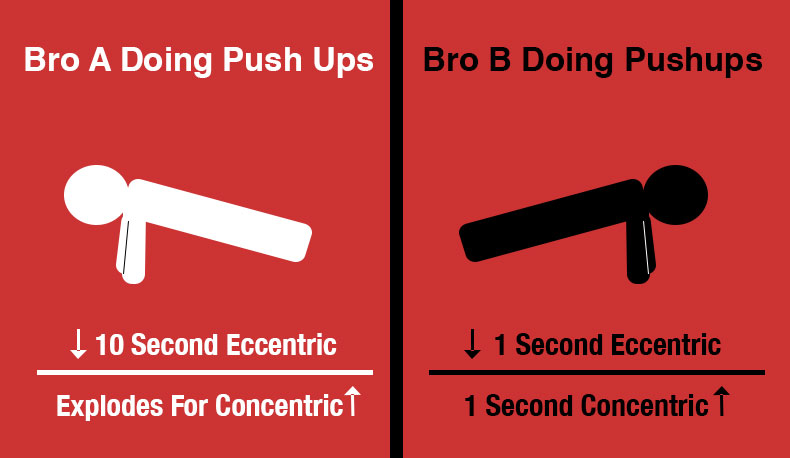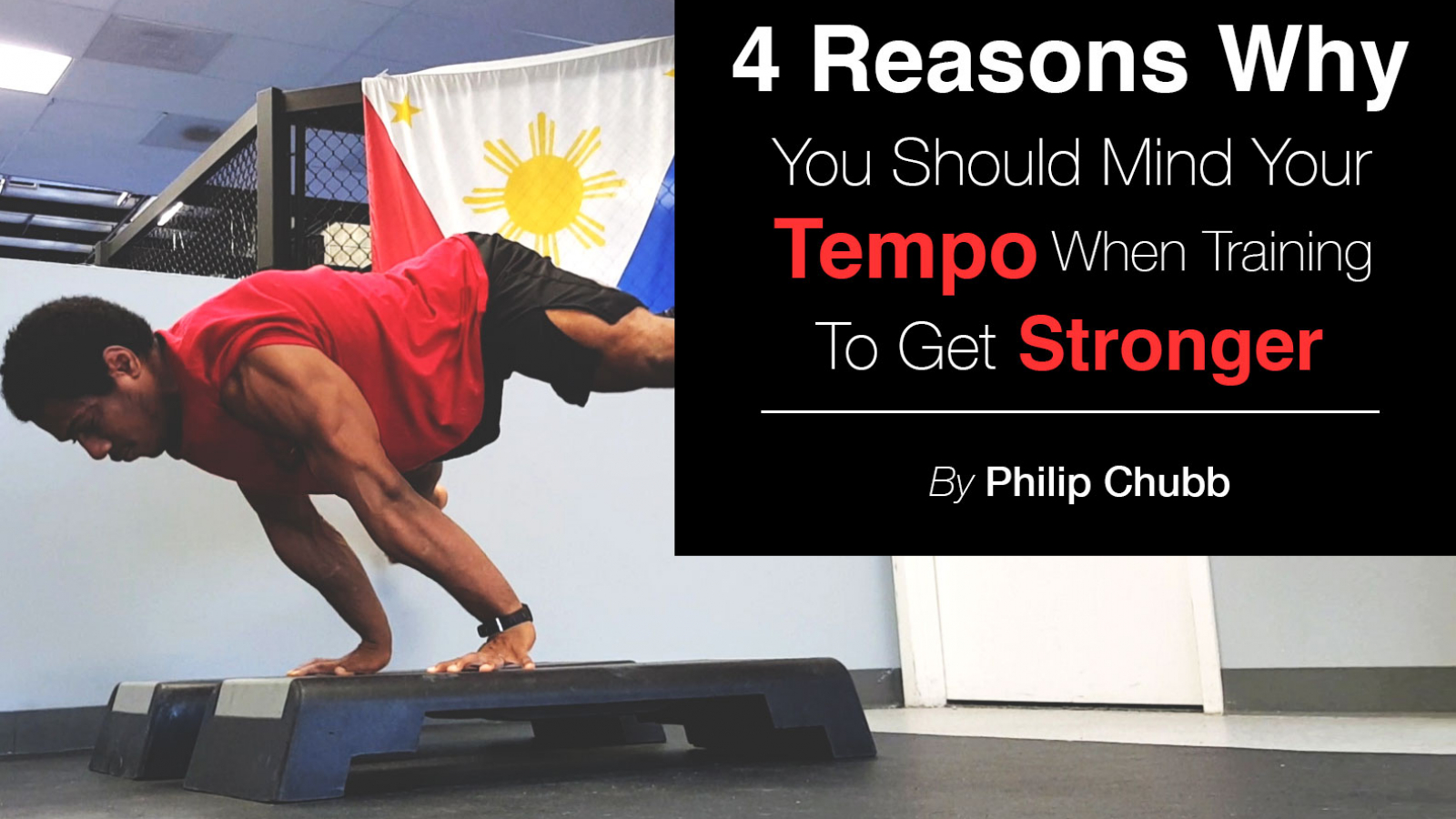Monitoring the tempo of your training gives you a whole new toolbox to create new gains on nearly ANY exercise you do. It’s one of the best tools you could have because you can make exercises harder without even needing any equipment. If you aren’t monitoring your tempo, you are leaving gains on the table. And leaving gains is unacceptable. So let’s get to learning!
Tempo is a concept I learned from Ian King and more in depth later from Charles Poliquin. It is the speed you do an exercise and it makes a big difference in the gains you’ll be getting from your training session.
Take two gym bros again. They’re doing push-ups together. Bro A does his reps with ten seconds on the way down and then he explodes up.

Bro B used one second on the way down and one second on the way up.
Both bros are going to be getting a different training stimulus because Bro A’s reps last 11 seconds each and Bro B’s reps last 2 seconds each. There is advantages and disadvantages to both. But by understanding tempo, you can use each to YOUR advantage and get more gains our your sessions.
HOW AND WHEN
Tempos are typically read as four numbers such as (4,2,1,0). Each number refers to the speed of a certain part of the movement. We’re going to go over not just how to read it, but use it to make huge gains!
The first number, which is 4, refers to the eccentric. The eccentric is the lowering part of the lift. For a squat, this would be as you lower down to the bottom. For a chin-up, this would be as you lower from the top of the rep. This is an important part of the lift and it’s probably the most abused.
Most people lower down like they just found a hundred dollar bill on the ground. But this is a mistake in most cases. Lowering down slowly keeps tension on the muscles and this tension leads to you doing work and making gains. You can test it out right now. Raise your arm above your head then drop it. There’s no tension. You simply relax and drop. Now raise it overhead and lowering it down in 4 seconds. You’ll feel tension in the shoulder as you lower down.
The same applies to lifting. As you lower, keep tension in the exercise by lowering in 3-5 seconds. Later you can play with lowering the eccentric time for more powerful type exercises or increasing it for other needs.
The second number, which is the 2 in this example, is the isometric AFTER the eccentric. So this would be at the bottom of a squat or push-up or at the hanging portion of a pull-up.
The isometric here is one of the best parts of tempo. It lets you add resistance to an exercise without even having to add weight or implements. As you lower down, you build up energy that your body can use to help you back out the movement.
This is easiest to see with a squat jump. As fast as you can, squat down and jump upward. Notice your height. Now do it again, except this time, pause at the bottom of the squat for 4 seconds. Then jump. Unless you are some sort of freak, you won’t get as high.
That is because the built up energy is lost with the isometric at the bottom of the movement. This has a lot of utility. Take any movement you want, especially extension movements like squats and presses, and add a pause to the bottom. You can instantly make it harder and make the movement more difficult for continued gains.
You can also remove the pause to allow the body to use more of the stored energy which is great for athletes who rely on it like track athletes or parkour athletes.
The third number, which is a 1 in this example, is the concentric. The concentric is the sexy part that everyone pays attention to. It’s where you actually lift.
The concentric isn’t something you really alter much when strength training. Typically you should place a 1 here for normal movements or an X for explosive movements like jumps or Olympic Lifts. You can put bigger numbers here, but that applies more for bodybuilders.
The reason is for strength, we want to teach our body to work fast and hard. By using a slow concentric, you teach your body to work slow and be slow. This can be useful for bodybuilding to get more mass or in a rehab setting where a trainee needs to teach their muscles to work correctly. But for more athletic types and strength trainees, a 1 works well here.
The last number in the tempo is the pause AFTER the concentric and BEFORE the next eccentric. This would be the top of a chin-up or push-up or squat.
This one has multiple uses. For extensor movements like squats and push-ups, you can add a number here to give a short rest. The short rest provides enough recovery mid set to either add more weight or more reps. For example, if you do squats with no break at the top, you may hit 5 reps. But if you add a short 3 second break at the top in between each rep, you may recover enough to perform another rep or two in the set.
On the other hand, with flexor movements like chin-ups, a pause at the top can be good for hypertrophy and causing a good pump or to help overcome a sticking point in time. You can hold the top of your chin-up and in time, your body will be more adapt at handling the top part leading to more reps in the future.
